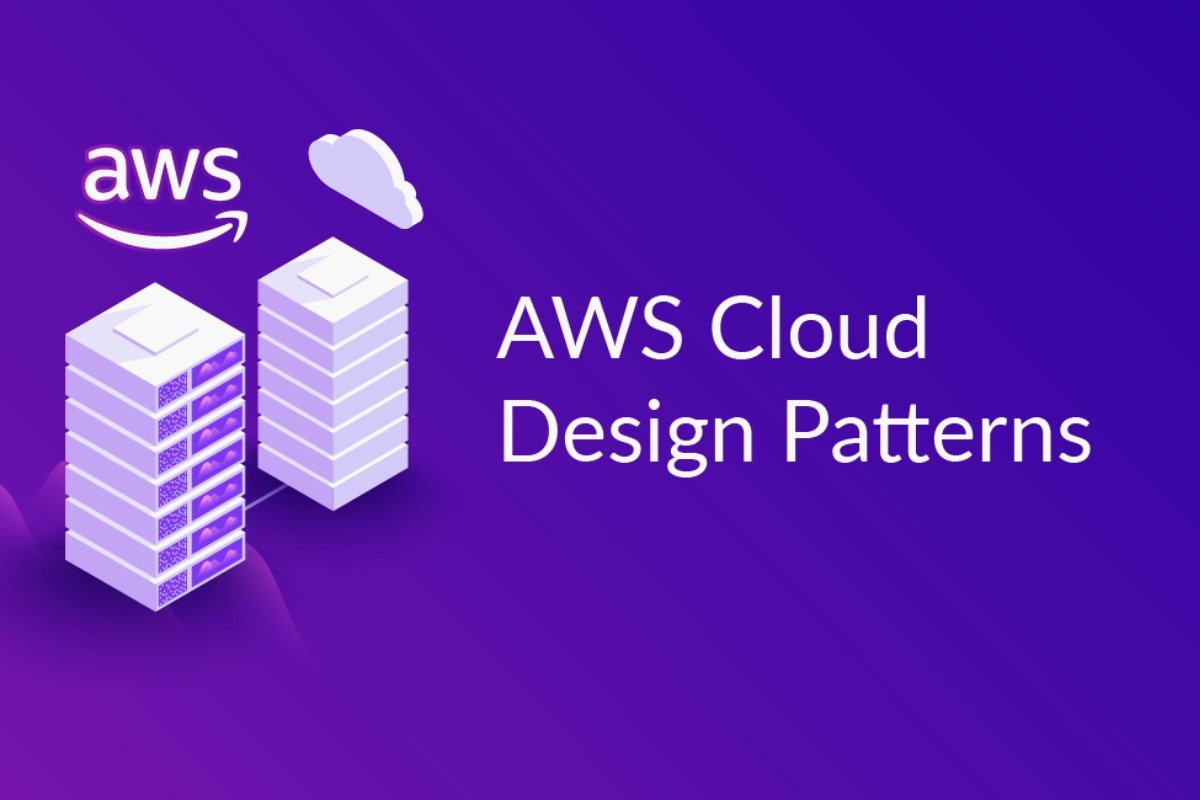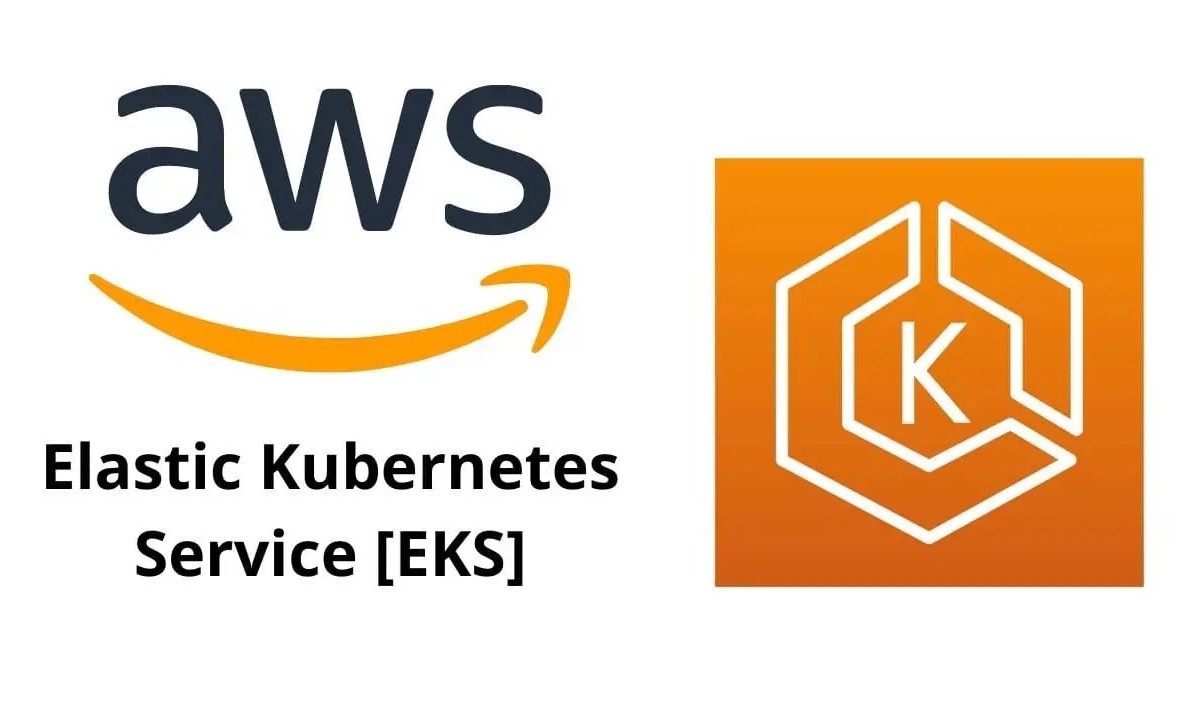Home>Technology and Computers>Bring Your Own IPs To The AWS Cloud Design Considerations


Technology and Computers
Bring Your Own IPs To The AWS Cloud Design Considerations
Published: January 23, 2024
Learn about the design considerations for bringing your own IPs to the AWS cloud. Explore the technology and computer aspects of this migration process.
(Many of the links in this article redirect to a specific reviewed product. Your purchase of these products through affiliate links helps to generate commission for Noodls.com, at no extra cost. Learn more)
Table of Contents
Introduction
In today’s digital landscape, businesses are increasingly leveraging the power of cloud computing to drive innovation, scalability, and agility. Amazon Web Services (AWS) stands at the forefront of this transformation, offering a comprehensive suite of cloud services to meet diverse business needs. One crucial aspect of migrating to the AWS Cloud is the management of IP addresses, which play a pivotal role in enabling communication between resources and the outside world.
As organizations transition to the AWS Cloud, they are often faced with the decision of whether to bring their own IP addresses or utilize the ones provided by AWS. This decision carries significant implications for network design, security, and compliance. By bringing their own IPs to the AWS Cloud, businesses gain greater control over their network infrastructure, enabling seamless integration with existing on-premises systems and facilitating a smoother migration process.
In this article, we will delve into the intricacies of bringing your own IPs to the AWS Cloud, exploring the benefits and design considerations associated with this strategic decision. By understanding the nuances of IP address management within the AWS environment, businesses can make informed choices that align with their operational requirements and long-term objectives. Let’s embark on this journey to uncover the key considerations and best practices for integrating your own IP addresses into the AWS Cloud ecosystem.
Understanding AWS Cloud and IP Addresses
In the realm of cloud computing, Amazon Web Services (AWS) stands as a trailblazer, offering a robust platform that empowers businesses to harness the potential of the cloud. At the core of AWS lies the concept of IP addresses, which serve as the digital identifiers for networked devices, enabling seamless communication across the internet. Understanding the interplay between AWS Cloud and IP addresses is pivotal for businesses seeking to optimize their network infrastructure and connectivity.
In the context of AWS, IP addresses are fundamental components that facilitate the identification and interaction of various resources within the cloud environment. AWS allocates both public and private IP addresses to instances, enabling them to communicate with other instances, services, and external systems. Public IP addresses are accessible from the internet, allowing instances to send and receive traffic, while private IP addresses are confined to the internal network, fostering communication within the AWS infrastructure.
Furthermore, AWS offers Elastic IP addresses (EIPs), which provide a static public IP address that can be associated with instances, offering flexibility and resilience in dynamic cloud environments. EIPs are particularly valuable for scenarios requiring failover support, as they can be remapped to alternative instances in the event of a failure, ensuring continuous availability and seamless connectivity.
In the realm of IP address management, AWS also provides Virtual Private Clouds (VPCs), enabling businesses to define their virtual network topology and control over IP addressing. VPCs empower organizations to create isolated and secure environments within the AWS Cloud, complete with their own IP address range, subnets, and routing tables. This level of customization allows businesses to tailor their network architecture to align with their specific operational requirements and security policies.
Understanding the nuances of IP address allocation, management, and connectivity within the AWS Cloud is pivotal for businesses embarking on their cloud journey. By grasping the intricacies of IP addresses in the context of AWS, organizations can optimize their network design, enhance security, and foster seamless communication across their cloud infrastructure.
In the subsequent sections, we will delve deeper into the benefits and design considerations associated with bringing your own IPs to the AWS Cloud, shedding light on the strategic implications of this decision for businesses seeking to maximize the potential of cloud computing.
Benefits of Bringing Your Own IPs to AWS Cloud
Bringing your own IP addresses to the AWS Cloud offers a myriad of compelling benefits that can significantly impact the efficiency, flexibility, and security of your cloud infrastructure. By leveraging your own IP addresses within the AWS environment, businesses can unlock a range of advantages tailored to their specific operational needs and strategic objectives.
Seamless Integration with On-Premises Systems
One of the primary benefits of bringing your own IPs to the AWS Cloud is the seamless integration with existing on-premises systems. By utilizing familiar IP address ranges within the cloud environment, organizations can facilitate smooth connectivity and interoperability between on-premises infrastructure and cloud resources. This integration streamlines the migration process, enabling businesses to extend their network seamlessly into the AWS Cloud without disrupting existing operations.
Enhanced Network Flexibility and Control
Bringing your own IPs empowers businesses with greater network flexibility and control. Organizations can leverage their own IP address space to design and manage their virtual network topology within AWS, aligning it with their unique requirements. This level of customization enables precise IP address allocation, subnet configuration, and routing control, fostering a tailored network architecture that aligns with specific operational and security policies.
Read more: How To Draw Clouds
Mitigation of IP Address Reassignment Challenges
By bringing your own IPs, businesses can mitigate the challenges associated with IP address reassignment. Utilizing familiar IP address ranges within the AWS Cloud reduces the complexities related to reconfiguring applications, databases, and security policies that are reliant on specific IP addresses. This mitigates potential disruptions and minimizes the need for extensive reconfiguration, simplifying the migration process and ensuring operational continuity.
Compliance with Regulatory Requirements
For organizations operating within regulated industries, bringing your own IPs to the AWS Cloud can facilitate compliance with stringent regulatory requirements. By utilizing familiar IP address ranges that align with industry-specific standards, businesses can navigate compliance challenges more effectively. This approach enables seamless adherence to regulatory mandates, ensuring that IP address management complies with industry regulations without compromising operational efficiency.
Cost Optimization and Resource Utilization
Bringing your own IPs to the AWS Cloud can contribute to cost optimization and resource utilization. By leveraging existing IP address resources, businesses can avoid the overhead costs associated with acquiring new IP address space from AWS. This approach also maximizes the utilization of existing IP address ranges, leveraging them across on-premises and cloud environments to optimize resource allocation and minimize unnecessary expenses.
In essence, bringing your own IPs to the AWS Cloud empowers businesses with enhanced integration capabilities, network flexibility, compliance adherence, and cost optimization. By leveraging familiar IP address ranges within the AWS environment, organizations can orchestrate a seamless and efficient migration, tailored to their specific operational and regulatory requirements. This strategic approach unlocks a spectrum of benefits that can elevate the performance, security, and scalability of cloud infrastructure, positioning businesses for sustained success in the digital era.
Design Considerations for Bringing Your Own IPs to AWS Cloud
When contemplating the integration of your own IP addresses into the AWS Cloud, a comprehensive understanding of the design considerations is paramount. This strategic decision necessitates meticulous planning and thoughtful execution to ensure a seamless and optimized network architecture within the cloud environment. By delving into the design considerations for bringing your own IPs to AWS, businesses can navigate the complexities of IP address management, network design, and security, thereby laying a robust foundation for their cloud infrastructure.
IP Address Space Planning and Management
The initial step in integrating your own IPs into the AWS Cloud involves meticulous IP address space planning and management. Businesses must assess their existing IP address resources and delineate the specific address ranges that will be extended into the AWS environment. This entails evaluating the address space requirements for various cloud resources, defining subnets, and establishing IP address allocation policies to optimize resource utilization and facilitate seamless connectivity.
VPC Design and Configuration
The design and configuration of Virtual Private Clouds (VPCs) play a pivotal role in integrating your own IPs into the AWS Cloud. Businesses must meticulously define their VPC topology, including the allocation of IP address ranges, subnet design, and routing configurations. This entails aligning the VPC architecture with existing on-premises networks, ensuring seamless integration and connectivity. Additionally, businesses must consider the implementation of VPC peering or VPN connections to facilitate secure communication between on-premises and cloud environments.
Routing and Connectivity
Efficient routing and connectivity are critical considerations when bringing your own IPs to the AWS Cloud. Organizations must establish robust routing policies to enable seamless traffic flow between instances, services, and external networks. This involves configuring route tables, leveraging route propagation, and implementing network address translation (NAT) to facilitate outbound internet connectivity. Furthermore, businesses must consider the integration of dynamic routing protocols to optimize network performance and resilience.
High Availability and Failover Support
Designing for high availability and failover support is imperative when integrating your own IPs into the AWS Cloud. Businesses must architect their network infrastructure to ensure continuous availability and resilience, leveraging Elastic IP addresses (EIPs) and failover mechanisms to mitigate potential disruptions. This involves mapping EIPs to critical instances, implementing redundancy strategies, and orchestrating failover scenarios to maintain uninterrupted connectivity in the event of instance failures or network disruptions.
Read more: How To Pierce Your Own Ear
Security and Access Control
Security considerations are paramount in the design of an IP address management strategy within the AWS Cloud. Businesses must implement robust security measures, including network access control lists (ACLs), security groups, and encryption protocols to safeguard their IP address resources and mitigate potential threats. Additionally, organizations must adhere to best practices for identity and access management (IAM), ensuring granular control over network access and minimizing the risk of unauthorized intrusion.
In essence, the design considerations for bringing your own IPs to the AWS Cloud encompass a multifaceted approach that encompasses IP address space planning, VPC design, routing optimization, high availability, and security. By meticulously addressing these considerations, businesses can orchestrate a seamless integration of their own IP addresses into the AWS environment, fostering a resilient, secure, and high-performing cloud infrastructure tailored to their specific operational requirements.
Security Considerations
Security considerations are paramount when integrating your own IP addresses into the AWS Cloud. As businesses extend their network infrastructure into the cloud environment, robust security measures are essential to safeguard IP address resources, mitigate potential threats, and ensure compliance with industry regulations. By addressing key security considerations, organizations can fortify their cloud infrastructure against vulnerabilities and unauthorized access, fostering a secure and resilient network architecture within the AWS environment.
Network Access Control Lists (ACLs) and Security Groups
Implementing granular network access control through Network ACLs and Security Groups is fundamental to bolstering the security of IP addresses within the AWS Cloud. Network ACLs serve as stateless firewalls at the subnet level, enabling businesses to define inbound and outbound traffic rules based on IP addresses, ports, and protocols. Security Groups, on the other hand, operate at the instance level, regulating traffic by creating allow rules that permit specific types of traffic. By meticulously configuring Network ACLs and Security Groups, organizations can enforce stringent access controls, minimizing the risk of unauthorized network traffic and potential security breaches.
Encryption Protocols and Data Protection
Leveraging robust encryption protocols is imperative to protect sensitive data and communications within the AWS Cloud. By implementing encryption mechanisms such as SSL/TLS for data in transit and encryption at rest for stored data, businesses can fortify the confidentiality and integrity of their IP address resources. Additionally, organizations should consider the utilization of AWS Key Management Service (KMS) to manage encryption keys, ensuring secure key storage and access control. By integrating encryption protocols and data protection measures, businesses can mitigate the risk of data breaches and unauthorized access to IP address resources.
Read more: How To Cut Your Own Hair In Layers
Identity and Access Management (IAM) Best Practices
Adhering to best practices for Identity and Access Management (IAM) is critical to maintaining robust security controls over IP address resources within the AWS Cloud. Organizations should implement the principle of least privilege, granting only the necessary permissions to users, groups, and roles. By defining fine-grained access policies and leveraging IAM roles for secure resource access, businesses can minimize the risk of unauthorized configuration changes and unauthorized access to critical network components. Additionally, implementing multi-factor authentication (MFA) further enhances the security posture, adding an extra layer of protection to prevent unauthorized access to AWS accounts and resources.
Compliance and Regulatory Adherence
For businesses operating within regulated industries, ensuring compliance with industry-specific regulations is a pivotal security consideration when integrating their own IPs into the AWS Cloud. Organizations must align their IP address management practices with regulatory mandates, such as GDPR, HIPAA, or PCI DSS, to safeguard sensitive data and maintain regulatory compliance. This entails implementing controls for data privacy, audit trails, and access monitoring to demonstrate adherence to industry standards. By prioritizing compliance and regulatory adherence, businesses can mitigate the risk of non-compliance penalties and uphold the integrity of their IP address management practices within the AWS environment.
In essence, addressing security considerations encompasses a multifaceted approach that encompasses network access control, encryption, IAM best practices, and regulatory adherence. By integrating robust security measures into their IP address management strategy within the AWS Cloud, organizations can fortify their network infrastructure, mitigate potential security threats, and foster a secure and compliant cloud environment conducive to sustained operational success.
Performance Considerations
Performance considerations play a pivotal role in the seamless integration of your own IP addresses into the AWS Cloud. As businesses extend their network infrastructure into the cloud environment, optimizing performance parameters is essential to ensure efficient communication, minimal latency, and high throughput. By addressing key performance considerations, organizations can orchestrate a network architecture within the AWS environment that delivers exceptional responsiveness, scalability, and reliability.
Network Latency and Throughput Optimization
Efficient network latency and throughput optimization are fundamental performance considerations when integrating your own IPs into the AWS Cloud. Businesses must evaluate the latency requirements for their applications and services, ensuring that communication between instances, databases, and external systems occurs with minimal delay. By leveraging AWS’s global infrastructure and content delivery networks (CDNs), organizations can optimize network latency and throughput, enhancing the responsiveness and user experience of their cloud-based applications.
Read more: How To Cut Your Own Bangs
Scalability and Elasticity
Designing for scalability and elasticity is imperative to optimize performance within the AWS Cloud. Businesses must architect their network infrastructure to accommodate fluctuating workloads and traffic demands, leveraging auto-scaling capabilities and load balancing to distribute traffic efficiently. By implementing scalable architectures and leveraging AWS services such as Amazon EC2 Auto Scaling and Amazon Elastic Load Balancing, organizations can ensure that their network resources dynamically adjust to meet performance requirements, fostering seamless scalability and optimal resource utilization.
Network Optimization and Traffic Management
Efficient network optimization and traffic management are critical performance considerations for integrating your own IPs into the AWS Cloud. Organizations must implement robust network optimization strategies, including traffic shaping, quality of service (QoS) policies, and content caching, to prioritize and manage network traffic effectively. By optimizing network resources and leveraging AWS services such as Amazon Route 53 for DNS management and Amazon CloudFront for content delivery, businesses can enhance network performance, minimize latency, and deliver a seamless user experience across their cloud infrastructure.
Monitoring and Performance Analysis
Continuous monitoring and performance analysis are essential components of optimizing network performance within the AWS Cloud. Businesses must implement robust monitoring tools and performance analysis frameworks to gain insights into network utilization, latency patterns, and resource performance. By leveraging AWS services such as Amazon CloudWatch and AWS X-Ray, organizations can gain real-time visibility into network performance metrics, identify bottlenecks, and proactively optimize their network architecture to deliver exceptional performance and reliability.
In essence, addressing performance considerations encompasses a holistic approach to optimizing network latency, scalability, traffic management, and performance monitoring within the AWS Cloud. By meticulously addressing these considerations, businesses can orchestrate a high-performing, responsive, and scalable network architecture tailored to their specific operational requirements, fostering a cloud environment conducive to sustained operational success and user satisfaction.
Compliance Considerations
Compliance considerations are paramount when integrating your own IP addresses into the AWS Cloud, particularly for organizations operating within regulated industries. As businesses extend their network infrastructure into the cloud environment, ensuring adherence to industry-specific regulations and standards is pivotal to safeguarding sensitive data, maintaining data privacy, and upholding the integrity of IP address management practices.
For businesses subject to regulatory mandates such as GDPR (General Data Protection Regulation), HIPAA (Health Insurance Portability and Accountability Act), or PCI DSS (Payment Card Industry Data Security Standard), aligning IP address management practices with regulatory requirements is essential. This entails implementing controls for data privacy, encryption, access monitoring, and audit trails to demonstrate compliance with industry standards. By prioritizing compliance adherence, businesses can mitigate the risk of non-compliance penalties, data breaches, and regulatory sanctions, fostering a secure and compliant cloud environment.
Furthermore, organizations must consider the implications of data residency and sovereignty requirements when integrating their own IPs into the AWS Cloud. Certain regulations mandate that data must be stored and processed within specific geographic regions or jurisdictions. By leveraging AWS’s global infrastructure and region-specific services, businesses can align their IP address management practices with data residency requirements, ensuring that sensitive data remains within the designated boundaries to comply with regulatory mandates.
In addition to data privacy and residency considerations, businesses must address compliance requirements related to access controls, data retention, and incident response. Implementing robust identity and access management (IAM) controls, encryption protocols, and data retention policies is essential to safeguarding sensitive information and demonstrating compliance with regulatory mandates. Furthermore, organizations must establish incident response protocols and data breach notification procedures to adhere to regulatory requirements and mitigate the impact of security incidents.
By meticulously addressing compliance considerations, businesses can fortify their IP address management practices within the AWS Cloud, navigate regulatory complexities, and uphold the integrity of their cloud infrastructure. This strategic approach not only mitigates the risk of non-compliance penalties but also fosters trust, transparency, and data security, positioning organizations for sustained success in regulated environments.
Conclusion
In conclusion, the decision to bring your own IP addresses to the AWS Cloud entails a strategic and multifaceted approach that encompasses network design, security, compliance, and performance considerations. By delving into the intricacies of integrating familiar IP address ranges into the AWS environment, businesses can unlock a spectrum of benefits tailored to their specific operational requirements and strategic objectives.
The benefits of bringing your own IPs to the AWS Cloud are far-reaching, encompassing seamless integration with on-premises systems, enhanced network flexibility and control, mitigation of IP address reassignment challenges, compliance with regulatory requirements, and cost optimization. This strategic approach empowers organizations to orchestrate a seamless migration, tailored to their specific operational and regulatory needs, fostering a resilient, secure, and high-performing cloud infrastructure.
Furthermore, the design considerations for integrating your own IPs into the AWS Cloud encompass meticulous IP address space planning, VPC design and configuration, routing optimization, high availability, and security. By addressing these considerations, businesses can lay a robust foundation for their cloud infrastructure, ensuring seamless connectivity, resilience, and adherence to best practices.
Security considerations play a pivotal role in fortifying the integrity of IP address management within the AWS Cloud. By implementing robust security measures, encryption protocols, IAM best practices, and regulatory adherence, organizations can safeguard their IP address resources, mitigate potential threats, and ensure compliance with industry regulations, fostering a secure and resilient cloud environment.
Performance considerations are essential to optimizing network latency, scalability, traffic management, and performance monitoring within the AWS Cloud. By addressing these considerations, businesses can orchestrate a high-performing, responsive, and scalable network architecture tailored to their specific operational requirements, fostering a cloud environment conducive to sustained operational success and user satisfaction.
In essence, the integration of your own IP addresses into the AWS Cloud represents a strategic endeavor that empowers businesses with greater control, flexibility, and security within the cloud environment. By navigating the complexities of IP address management, network design, security, compliance, and performance, organizations can orchestrate a seamless and efficient migration, tailored to their specific operational and regulatory needs, positioning them for sustained success in the digital era.








